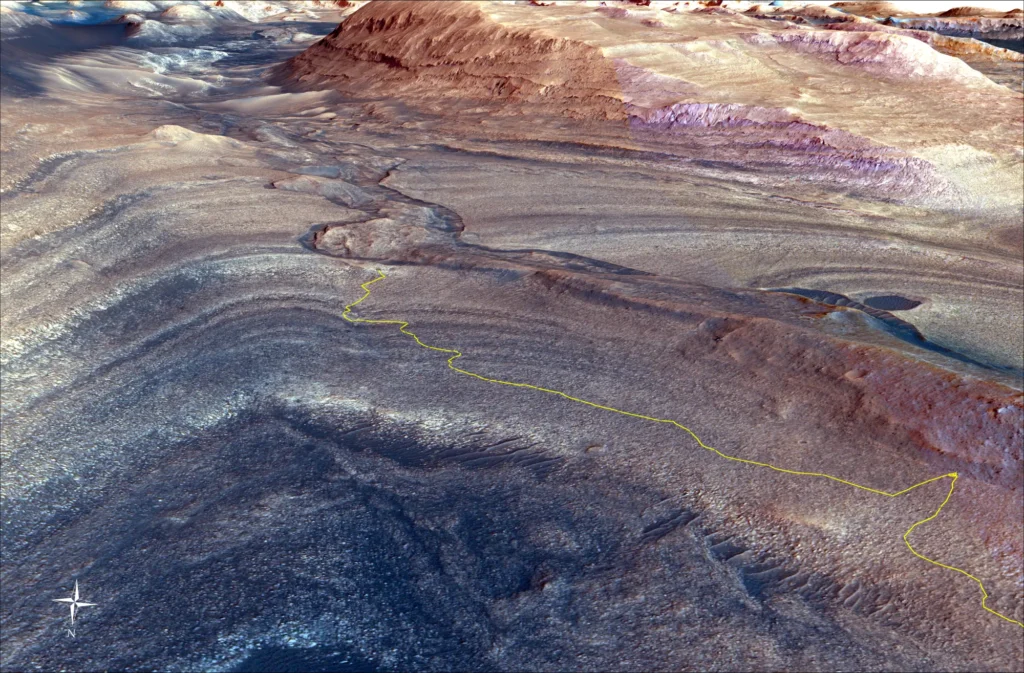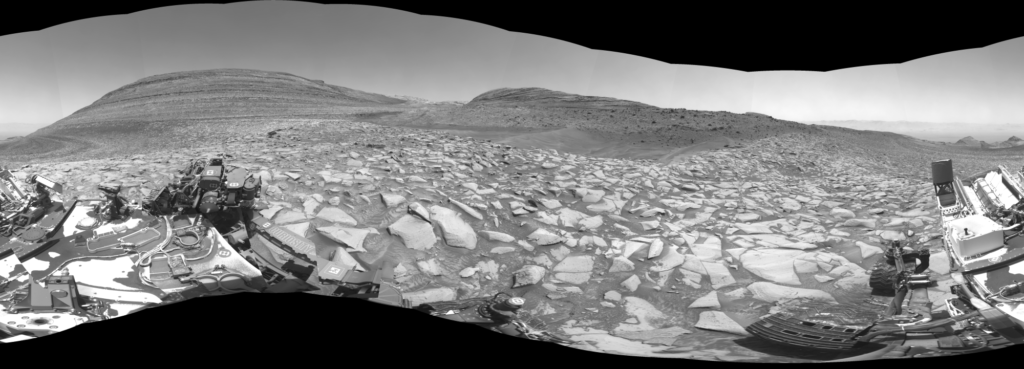The Curiosity rover has begun exploring a new section of Gale Crater. Scientists hope that it would be able to find evidence indicating that liquid water flowed in this part of Mars for much longer than previously thought.
Geological record of the climate of Mars
Since 2014, Curiosity has been climbing Mount Sharp, the central peak of Gale Crater. Its height reaches 5 km above the surrounding surface. Its piedmont is composed of many sedimentary layers, in which the history of the changing climate of the Red Planet is recorded.

So in the lower part of the piedmont there is a layer rich in clay minerals. They were formed as a result of interaction with a large amount of water. The rover also found a layer containing large amounts of sulfates, minerals. They are often formed when water evaporates.
Now Curiosity has begun to study the formation, which is able to provide new information about the past of the Red Planet. It’s about the Gediz Vallis channel.
Floods and mudflows of the Red Planet
Gediz Vallis is a snake-like formation with walls too steep to be created by the wind. Scientists believe that it was carved by a mudflow or river that descended from the mountainside. The most interesting thing is that, apparently, the channel was formed after the formation of powerful layers of sedimentary deposits, which were previously studied by Curiosity. This suggests that at some rather late stage, after a long dry period, the water returned to the Gale crater again, and in large quantities.

This explanation is consistent with Curiosity’s previous discoveries. The data it collected indicated that the water in Gale Crater appeared and disappeared in stages, rather than gradually, as the planet became drier. These cycles of droughts and floods are evidenced by mud cracks, dried-up shallow salt lakes and traces of mudflows like the same Gediz Vallis.
Scientists hope that studying Gediz Vallis will allow them to clarify the chronology of the existence of water on Mars. In addition, the channel is filled with boulders and debris carried out from the very top of the mountain, where Curiosity will never visit. They can give scientists an idea of what materials are there.
According to https://www.nasa.gov
Follow us on Twitter to get the most interesting space news in time
https://twitter.com/ust_magazine


